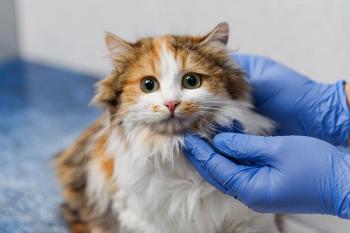
Studies show that conventional wisdom has evolved with research.
Department of Clinical Sciences
College of Veterinary Medicine
Mississippi State University
Mississippi State, MS 39762

Studies show that conventional wisdom has evolved with research.

Dr. Philip Bushby has thoughts on this now more complex question and how to work with clients to come to the best decision.

Task force member Dr. Philip Bushby discusses what he feels is the most important message delivered in the update.

Not all spays and neuters are "routine." Cryptorchids, hermaphrodites, uterus unicornis, mammary hyperplasia and lactation may present surgical challenges, but approaches to each of these unusual cases are actually quite simple.

Between 6 and 8 million dogs and cats are admitted to animal shelters each year in the United States. Often the animals admitted are unvaccinated, undernourished, stressed, and carrying one or more diseases. Infection disease control should be an essential component of the care of any animal admitted to a shelter.

The development of the Guidelines for Standards of Care in Animal Shelters was a three-year project of the Association of Shelter Veterinarians. It culminated in the publication of the "Standards" document in December 2010.

Surgical complications are always a possibility in spay/neuter surgeries, but certain practices can help minimize problems. Obviously, prevention of complications is the best approach, but early recognition of problems and effective management of problems are the keys to ensuring excellent patient care and successful recovery from surgery.

Each year in the United States millions of homeless or unwanted dogs and cats are euthanized in animal shelters and humane societies. While precise numbers are difficult to obtain the Humane Society of the United States estimates that between 3 and 4 million dogs and cats are euthanized each year (HSUS 2006).

Running a high volume spay neuter operation requires much more than having efficient surgeons. Everything about the operation from scheduling appointments and intake of patients to discharge of patients after surgery must be organized and run efficiently.

Seven to eight million dogs and cats are admitted to animal shelters each year in the United States. Until recently no comprehensive set of medical care standards for animal shelters had been published.

Each year in the United States millions of homeless or unwanted dogs and cats are euthanized in animal shelters and humane societies. While precise numbers are difficult to obtain the estimates range from 3 to 4 million.

Between 6 and 8 million dogs and cats are admitted to animal shelters each year in the United States. Often the animals admitted are unvaccinated, undernourished, stressed, and carrying one or more diseases.

There is a homeless pet crisis in the United State that is a direct result of animals left unaltered in our communities. ASPCA and HSUS estimates are that 6-8 million animals are placed in shelters each year and of these 3 – 4 are euthanized. That equates to one animal euthanized every 2 seconds every working day each year.

Cryptorchism is defined as the failure of one or both testicles to descend into the scrotum. The cryptorchid testicle can be located anywhere along the path from the area of fetal development of the gonads (just caudal to the caudal pole of the kidney) to the subcutaneous tissue between the external inguinal ring and the scrotum.

Surgical complications are always a possibility in spay/neuter surgeries, but certain practices can help minimize problems. Obviously, prevention of complications is the best approach, but early recognition of problems and effective management of problems are the keys to ensuring excellent patient care and successful recovery from surgery.

Think back to when you first learned to perform ovariohysterectomies and neuters. It is probable that you were taught these procedures early in your surgical education at a time when you had limited surgical skills.

There is a homeless pet crisis in the United State that is a direct result of animals left unaltered in our communities. ASPCA and HSUS estimates are that 6-8 million animals are placed in shelters each year and of these 3 – 4 are euthanized. That equates to one animal euthanized every 2 seconds every working day each year.

Published: March 3rd 2022 | Updated:

Published: April 1st 2010 | Updated:

Published: April 1st 2010 | Updated:

Published: April 1st 2010 | Updated:

Published: April 1st 2010 | Updated:

Published: April 1st 2010 | Updated: